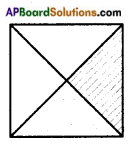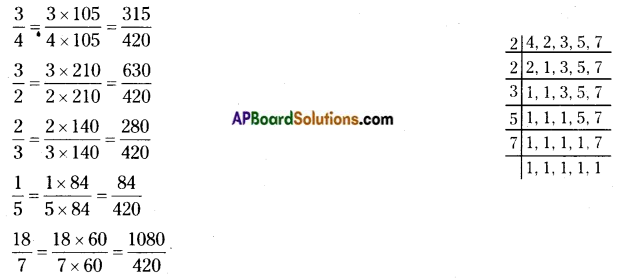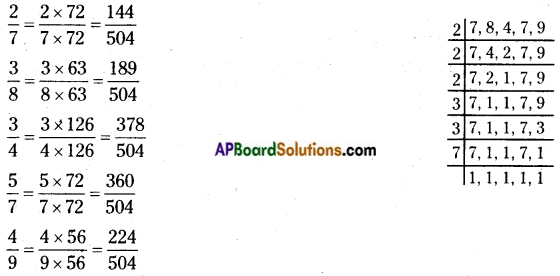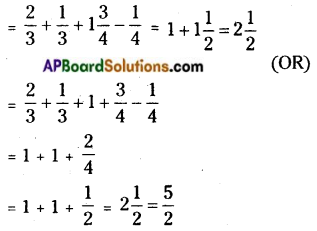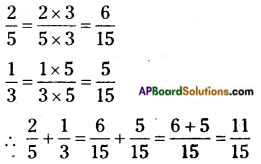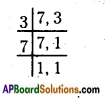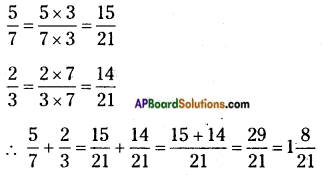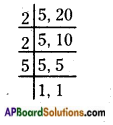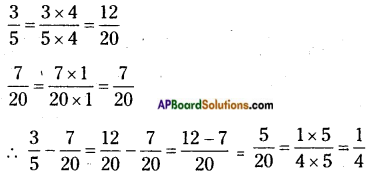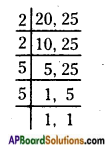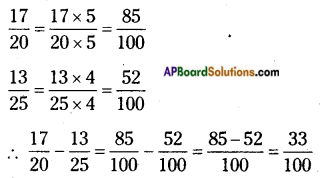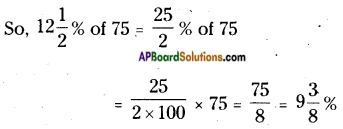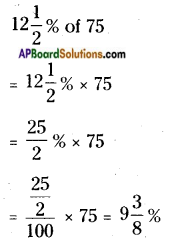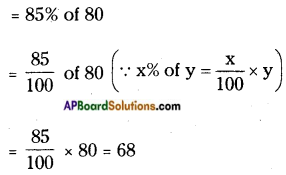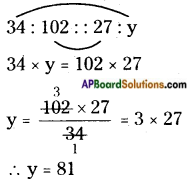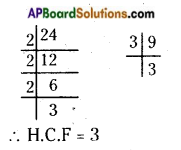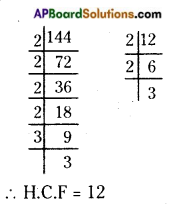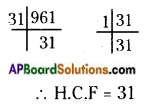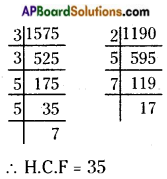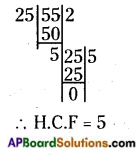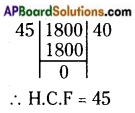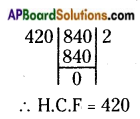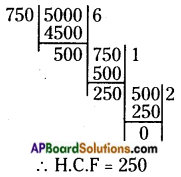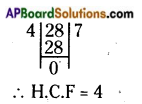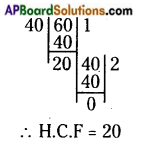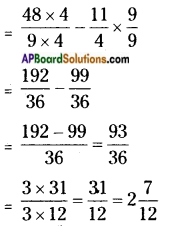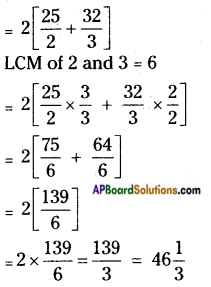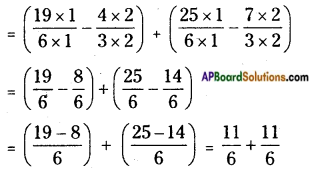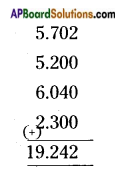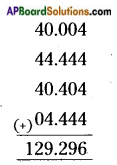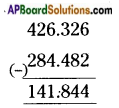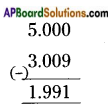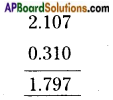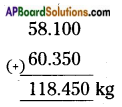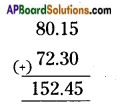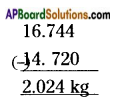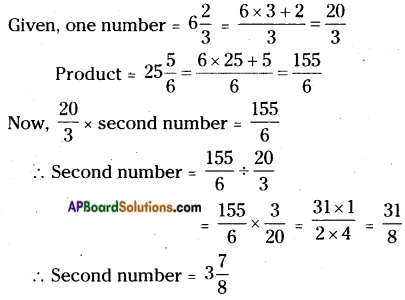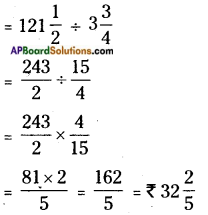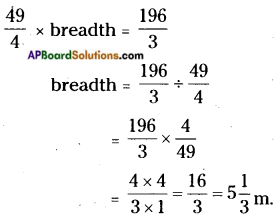AP State Syllabus AP Board 6th Class Maths Solutions Chapter 7 Introduction to Algebra Ex 7.2 Textbook Questions and Answers.
AP State Syllabus 6th Class Maths Solutions 7th Lesson Introduction to Algebra Ex 7.2
Question 1.
Write the expressions for the following statements.
(i) 5 is added to three times z
(ii) 9 times ‘n’ is added to ’10’
(iii) 16 is subtracted from two times ‘y’
(iv) ‘y’ is multiplied by 10 and then x is added to the product
Answer:
i) Given 5 is added to three times z
three times z = 3z 5 is added to three times z = 3z + 5
ii) Given 9 times n is added to 10
9 times n = 9.n
9 times ‘n’ is added to 10 = 9n + 10
iii) Given 16 is subtracted from two times y
two times y = 2.y
16 is subtracted from two times y = 2.y – 16
iv) Given y is multiplied by 10 and then x is added to the product, y is multiplied by 10 = 10.y
x is added to the product = 10.y + x
![]()
Question 2.
Peter has ‘p’ number of balls. Number of balls with David is 3 times the balls with Peter. Write this as an expression.
Answer:
Given, number of balls with Peter = p
Number of balls with David = 3 times with the Peter
= 3.p
Expression is 3p.
Question 3.
Sita has 3 more note books than Geetha. Find the number of books that Sita has. Use any letter for the number of books that Geetha has.
Answer:
Given Sita has 3 more note books than Geetha.
Let the number of note books Geetha has = x
Number of note books Sita has = 3 more note books than Geetha
= x + 3
![]()
Question 4.
Cadets are marching in a parade. There are 5 cadets in each row. What is the rule for the number of cadets, for a given number of rows? Use ‘n’ for the number of rows.
Answer:
Given 5 cadets in each row.
Number of rows = n
Number of cadets in each row = 5
Number of cadets in n rows = 5 × n = 5n
